
Exhaust Back Pressure Valve
It's there to warm your Catalytic Converter up from a cold startThe exhaust back pressure valve is a butterfly valve fitted between the catalytic convertor and silencer. Its purpose is to restrict exhaust gas flow on a cold engine and speed the warm-up cycle to achieve good driveability and low emissions in the minimum time. The valve is sprung to the closed position and when operating, the spring loading is balanced against the exhaust back pressure which tries to open the valve. When a vacuum pump feed is applied to its vacuum capsule, the valve is held fully open.

In order to maintain engine idle speed when the exhaust back pressure valve is closed, a throttle jacking capsule is provided. The capsule, mounted on a bracket fixed to the inlet manifold, is connected by rod to the throttle linkage such that when a vacuum is applied to the capsule, the throttle is opened sufficiently to compensate for the restricted exhaust and enable the engine to idle.
The vacuum pump feed to both the back pressure valve and throttle jacking capsule is controlled by two vacuum solenoid valves located in the engine bay relay box. When each valve is energised a vacuum feed is supplied to that component. The two solenoid valves are controlled by the ECM via a changeover rely, such that when the back pressure valve solenoid is energised (vacuum supplied, EBP valve opened) the throttle jacking solenoid is de-energised (no vacuum supplied, no throttle jacking) and vice versa.
The ECM uses signals from various sensors in order to open the back pressure valve during engine cranking, and close the valve during cold running until the engine has warmed sufficiently. In order that the full vehicle performance may be available when necessary however, the valve may be opened by vigorous driving techniques.
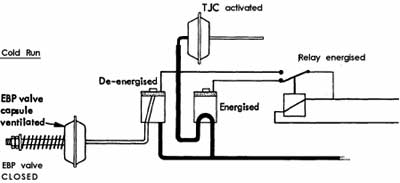
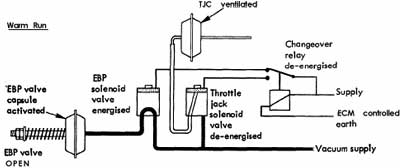
REMOVING IT
The EBPV was designed for the US market to meet regulations for emissions. This can be removed without causing any ill effect to the running of your Esprit. The valve can cause problems if it sticks and can rattle on start-up. You'll only find EBPV's on SE's, S4, S4s as these are all fitted with Cats as standard. GT3's shouldn't have this valve.
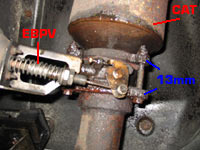
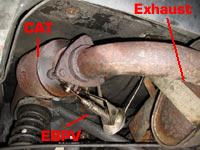
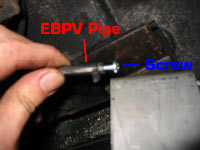
To remove your valve from the exhaust system, you'll need either a spacer or a new exhaust that fits straight to the cat. PUK Esprit Racing can provide a spacer for an inexpensive price. All you then need to do is undo the bolts holding the EBPV (these can be badly corroded) and loosen the exhaust mountings if you need some play to remove the EBPV. Replace with the spacer and tighten the Exhaust mounting back up.
You'll also need to block the EBPV pipe with a screw (see above) or more neatly by using a T-piece to block the pipe (see below).
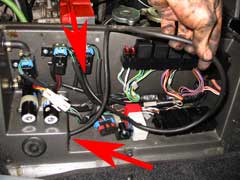
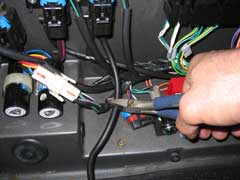
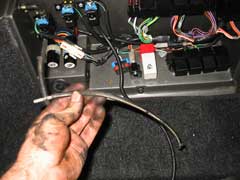
Pull the hose back into the Esprit from the EBPV. You can then cut it short and use a T-piece to turn it back on itself, blocking the hose.
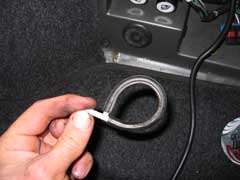
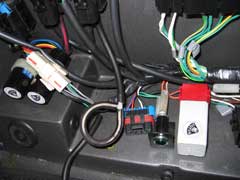
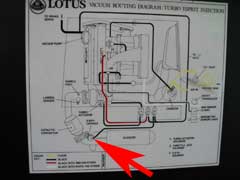
You can then neatly place it behind the other hoses in the rear box in the boot of the Esprit. If the pipe is not blocked, then you'll find your pump that gives the vacuum for the valve will continuely run and eventually burn-out.
Removing the Throttle Capsule
Most owners don't remove the throttle capsule, which is part of the EBPV system. It sits under the plenum and attaches to the throttle cable. LEW's became stiff 3 years after the EBPV was removed and started to interfer with our warm idle. Our Esprit once warm starting occasionally having an idle of around 2000rpm. Over time this became more regular until we track it down to being a problem with the throttle capsule. Once remove our Esprit was fine. We'd advise on it's removal, but it's up to you.
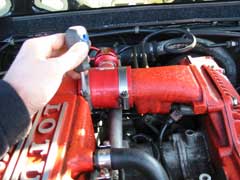
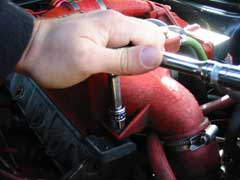
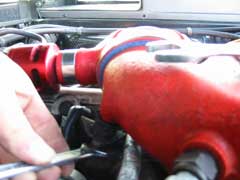
For access to the capsule, you need to remove the chargecooler. This requires the removal of 3 jubilee clips and two bolts. A full guide to removing the chargecooler can be found here.
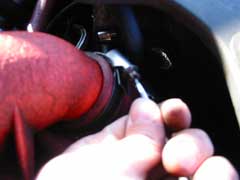
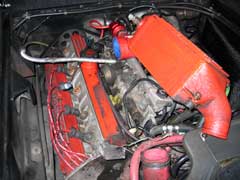
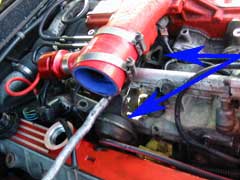
Once the chargecoolers been moved out of the way, you'll see the capsule and where the rod attaches to the throttle cable. The blue arrows point out the capsule and connection.
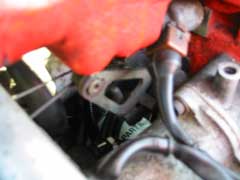
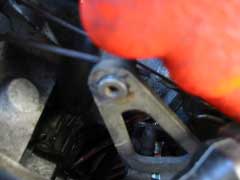
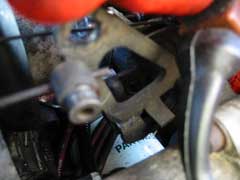
To remove the rod from the triangular piece (quadrant) just use an allen key to unscrew the grub holding the rod tight
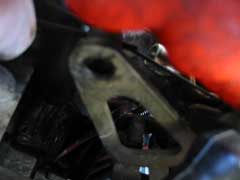
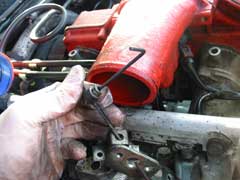
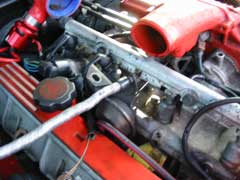
You can then remove the connection and the rod will be free. You can see the allen key in the grub in the middle picture above.
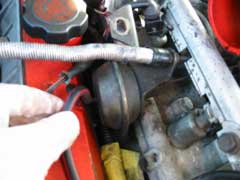
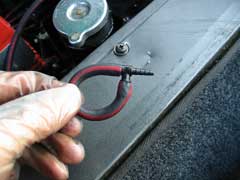
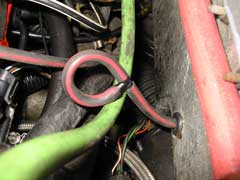
Now you need to remove the vacuum pipe from the capsule and block it off. We like to use a t-piece to feed the pipe back on it's self, We cut the pipe closer to the bodywork to keep it tidy. You can push a ball bearing into the pipe or a screw, but you must block off the pipe.
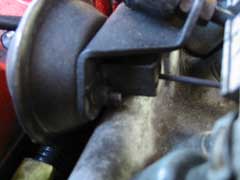
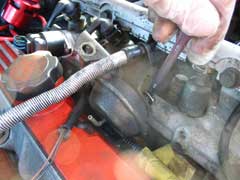
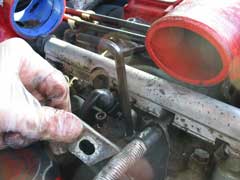
Time to remove the capsule. It's attached to a bracket with two small nuts. You need to remove the bracket to get a the nuts to release the capsule.
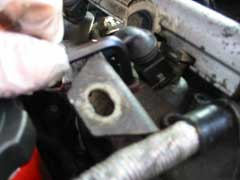
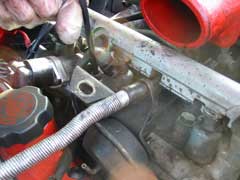
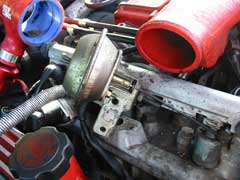
Two allen head bolts hold on the bracket, which is actually one of the chargecooler mountings. Once this is removed you can pull it and the capsule out.
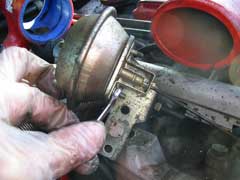
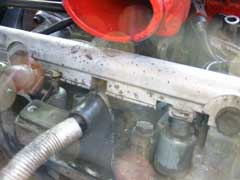
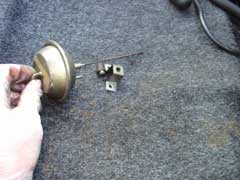
Using a small spanner you can remove the nuts and remove the capsule from the mounting. You can then replace the mounting, as the chargecooler will need it. The picture above right shows the capsule and it's fixings.
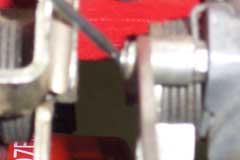

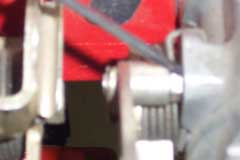
The last piece of the system to remove is the quadrant, which the rod was attached to. This needs to be removed as it can affect the throttle and become a safety issue. Removing this is difficult as access it restricted by the plenum. You'll have to remove the plenum to get at the quadrant fixings.
Take care when you disconnect fuel lines, they are under fuel pressure, there are rubber "o" rings on fittings and injectors. Take even more care when you reassemble not to damage these seals. The removal of the plenum nose will allow all the access you require, you can remove the circlip that secures the quadrant, slide the quadrant off the pivot and then unscrew the pivot pin, an open end spanner may be better than the ring spanner I suggested, depends how tightly it's secured.
I suggested disconnecting fuel lines as a safe option to prevent risk of necking a fuel line and ease to reassemble, correct alignment of the injectors will help prevent "o" ring damage, fuel pipes connected can cause mis-alignment. With a long slim screwdriver you should be able to prise the retaining clip off the pivot without dismantling anything.
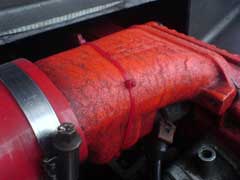
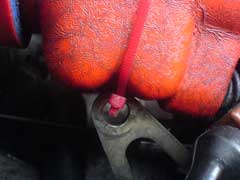
We haven't actually removed the quadrant as yet, as time was an issue. A temporary fix, until you have more time, is to secure the quadrant to the plenum with a tie wrap (or 4 in our case), that would prevent the quadrant folwing throttle operation.
EBPV Spacer
|
|